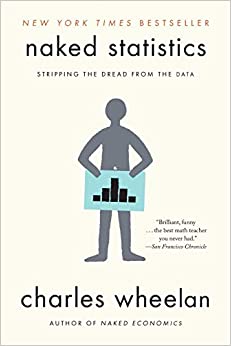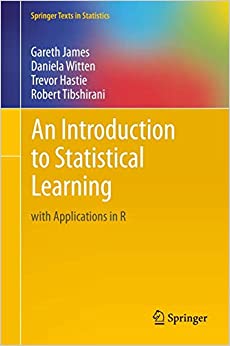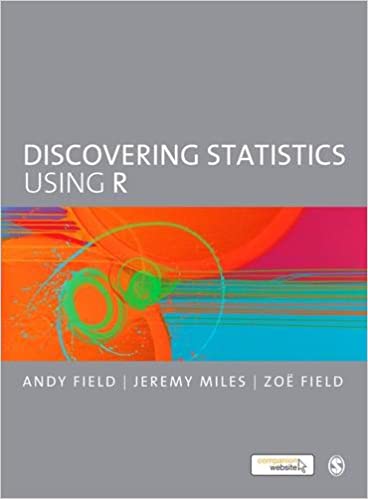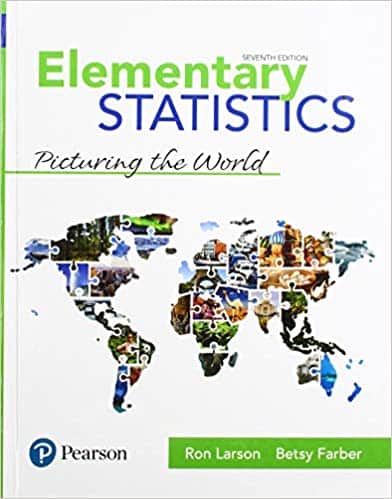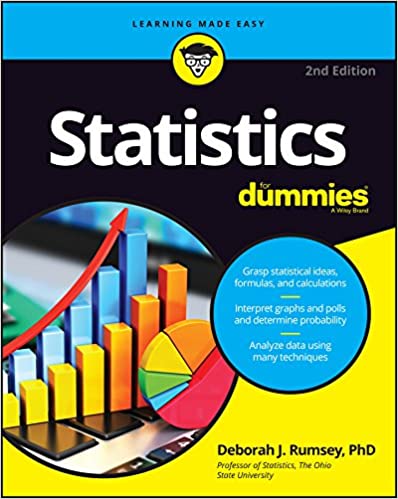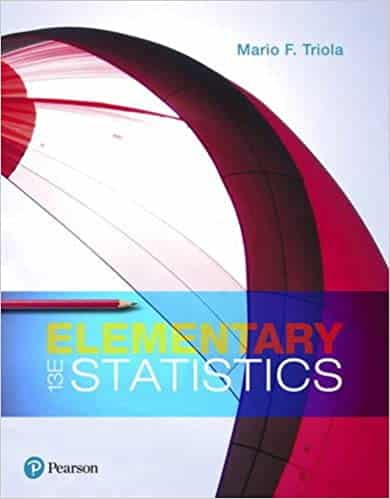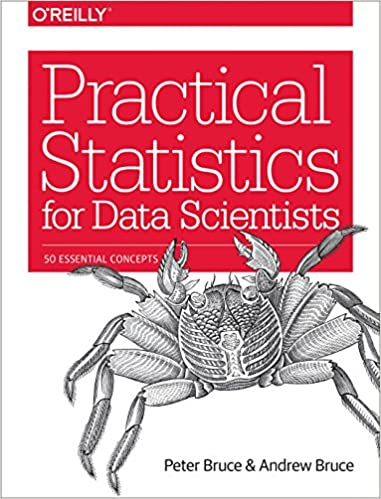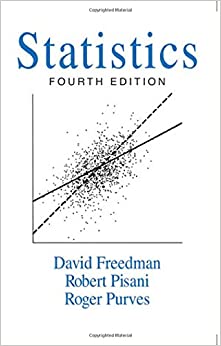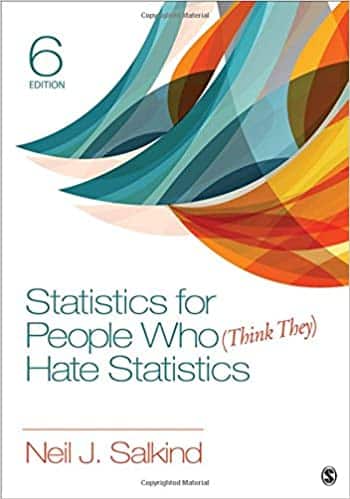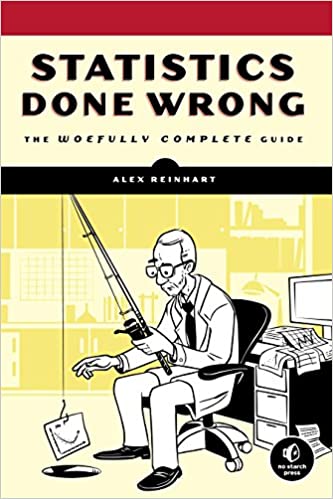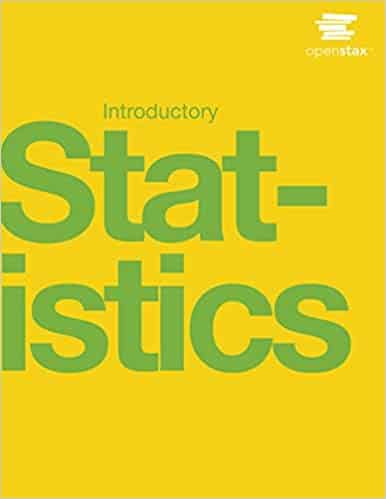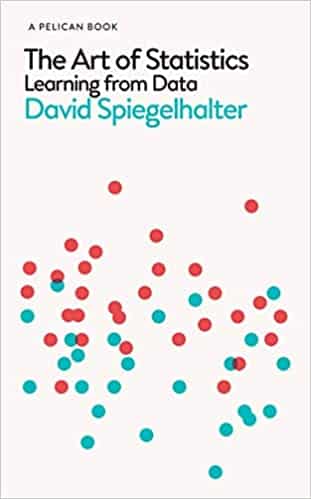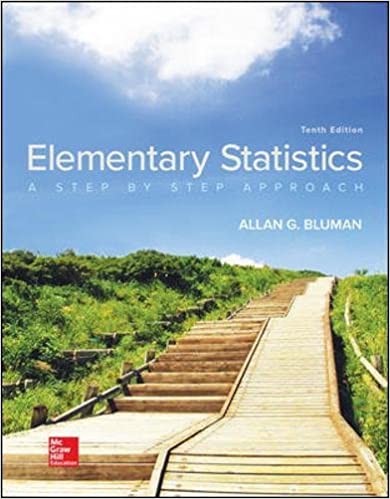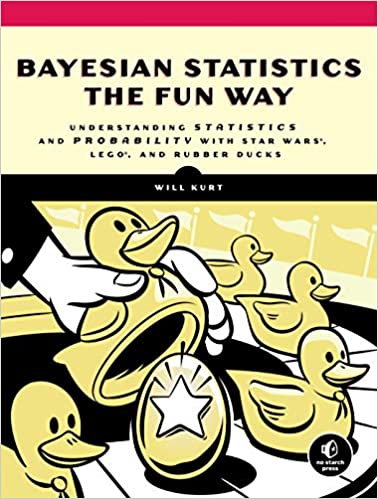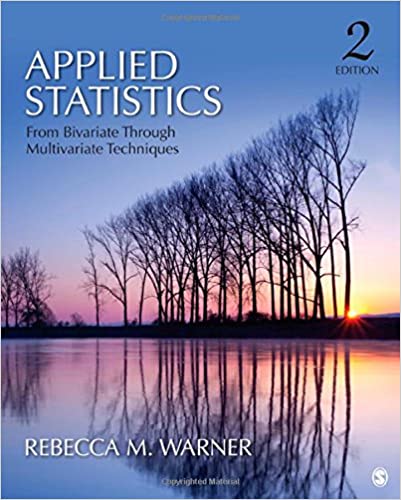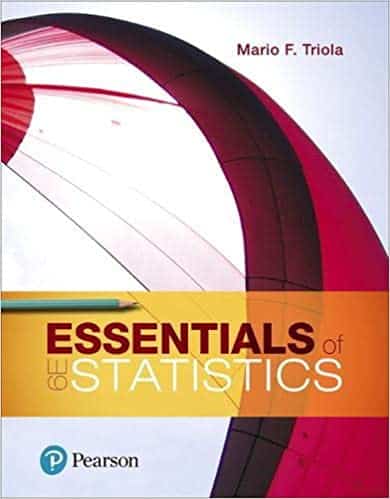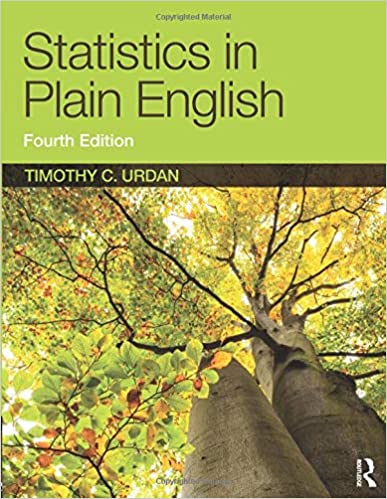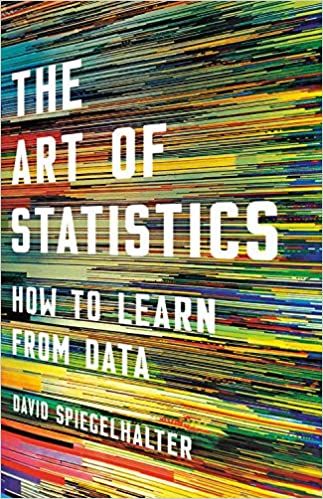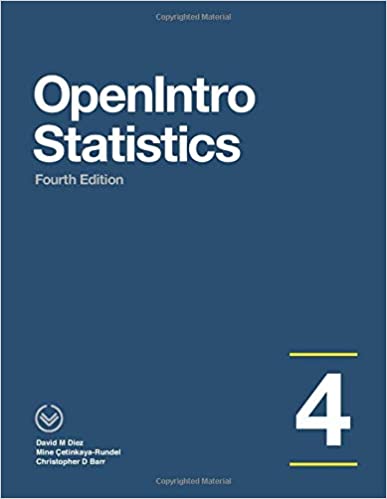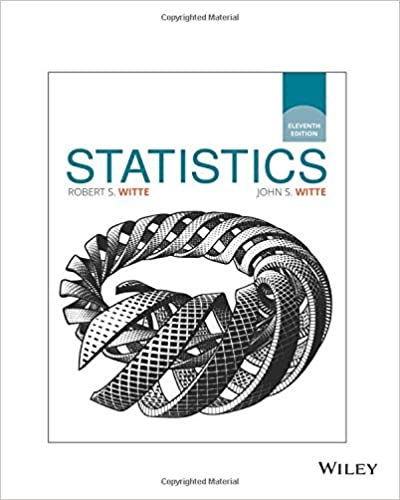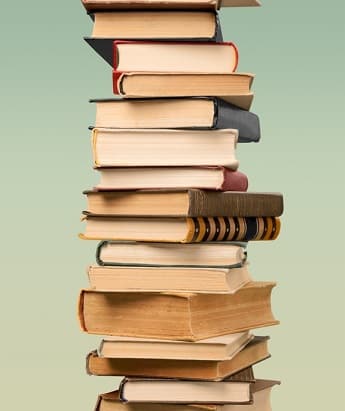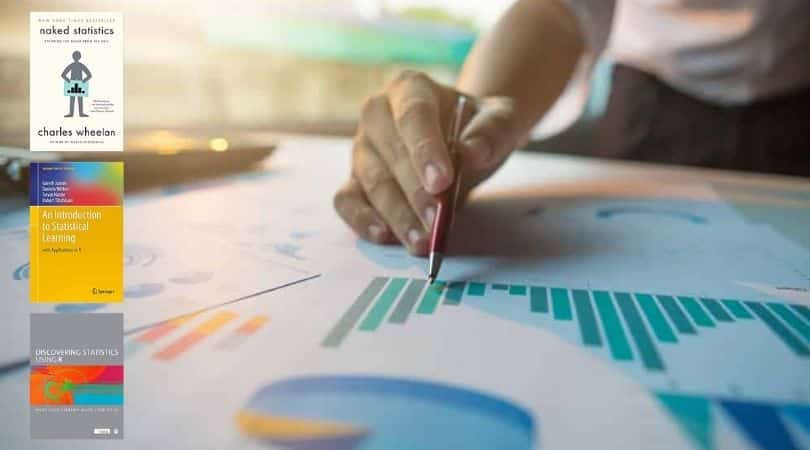
DISCLOSURE: This post may contain affiliate links, meaning when you click the links and make a purchase, I receive a commission. As an Amazon Associate I earn from qualifying purchases.
Have you ever been assigned a math textbook that you never used? Often times it can seem much, much easier to rely on the in-person teachings of your professor who can explain all of the complicated methods and strategies of statistics. However, the right textbook will supplement the teachings and can be used as an excellent guidebook when you’re home or in your dorm solving problems on your own.
What are the Best Statistics Books to read?





This guide has a wide range of statistics books. They’re not all made equal! Some are better for beginners while others are made for masters of the subject. Some of these books apply stats in real-life situations that make it super easy to understand while others are more cut-and-dry textbook styles. Others still are novels that teach you how statistics works and what it is and can be used for.
You might even want to purchase two books or more book, using one to supplement the other! Your journey to the best statistic book begins now.
Best Statistics Books: Our Top 20 Picks
Here are some of the best statistics books that you can consider to expand your knowledge on the subject:
1. Naked Statistics: Stripping the Dead from the Data by Charles Wheelan
If there’s ever been a book that made statistics attractive, it’s this one! This book would be a great idea to buy if you’ve been skipping stats class or you don’t understand your higher education textbook.
Charles Wheelan wrote this mathematic novel to help people really understand what statistics is and what it can do. He applies it to things that generally everyone likes to talk about like Netflix, game shoes and catching criminals.
This author has a series of Naked books that strip away all the wordy technical jargon and focus on the underlying aspects that are the building blocks of statistics. Wheelan applies absolute transparency to topics like inference, regression analysis, correlation while showing how data can be manipulated, misrepresented and exploited.
- Authors: Charles Wheelan (Author)
- Publisher: W. W. Norton & Company; 1st Edition (January 13, 2014)
- Pages: 304 pages
2. An Introduction to Statistical Learning: with Applications in R (Springer Texts in Statistics) by Gareth James, Daniela Witten, Trevor Hastie and Robert Tibshirani
This textbook covers topics like biology, finance and astrophysics. It clearly explains the field of statistics and how it is a valuable skill and way to analyze not only data but the world at large. It has real-world examples and applications that show just how valuable statistics really is. In this book, readers will learn
• Linear regression
• Modeling techniques
• Tree-based methods
• Shrinkage approaches
• Support vector machines
• Clustering
• Much more
This textbook also keeps it interesting with many colorful images and graphics that show statistics being used across a wide range of fields.
This book is not a beginner’s textbook, thought. It is made for those who have previously had a course in linear regression.
- Authors: Gareth James (Author), Daniela Witten (Author), Trevor Hastie (Author), Robert Tibshirani (Author)
- Publisher: Springer; 1st ed. 2013, Corr. 7th printing 2017 Edition (June 25, 2013)
- Pages: 440 pages
3. Discovering Statistics Using R by Anthony Field, Jeremy Miles and Zoe Field.
This book allows students and educators to arrive at statistical answers by using R. It has an all-new structural approach that really engages readers. This book includes hundreds of examples as well as many self-assessments and quizzes to ensure maximum retention.
Teachers will move this book as a supplement to their book assignment for their classes or simply to use it for better teaching practices.
It is definitely a book that can be easily digested by beginners but it is also written in a style that can be appreciated by professionals, educators and scientists alike.
- Authors: Andy Field (Author), Jeremy Miles (Author), Zoe Field (Author)
- Publisher: SAGE Publications Ltd; 1st Edition (April 5, 2012)
- Pages: 992 pages
4. Elementary Statistics: Picturing the World (7th Edition) by Ron Larson and Betsy Farber
This is a great textbook that pretty well matches with the 6th edition. Students needing either edition can substitute one for the other, sometimes at a much lower cost. The textbook may or may not come with an access code so be sure you are way of what you are purchasing and how much you are spending.
This textbook approaches statistics with well thought out step-by-step instructions, many real-life examples to make them easier to understand and a thoughtfully designed page layout to make viewing pleasurable and easy to digest.
- Authors: Ron Larson (Author), Betsy Farber (Author)
- Publisher: Pearson; 7th Edition (January 3, 2018)
- Pages: 704 pages
5. Statistics for Math and Science by Deborah J. Ramsey
Statistics for dummies has done it again with their fantastic and simplistic approach to any topic under the sun. In this book, reader will learn the very basics of statistics topics like
• Interpret and analyze graphs and charts
• Determine odds by way of probability
• How to confidently guesstimate something
• Confidence intervals
• How to create and perform a hypothesis
• Computing statistical formulas
This book as tons of real-world examples that make it really easy to understand and apply. It’s would be well utilized as a supplement to any textbook. Even though it is a book for “dummies” it has all the basics that you need to know so it can be well used as a piece of reference material no matter where you are in your journey through data and statistics.
- Authors: Deborah J. Rumsey (Author)
- Publisher: For Dummies; 2nd Edition (May 27, 2016)
- Pages: 408 pages
6. Elementary Statistics (13th Edition) by Mario F. Triola
This textbook is unique as it includes commentary directly from the author on certain topics, formulas and definitions. It’s easy to read, easy to follow and at times quite humorous. It’s a great textbook to use even if you haven’t done math in a long time. Mario Triola makes it esy to pick right back up by giving quick refreshers and not making simple topics too complex.
The only thing to be wary of is that if you care renting the textbook, it very well may not come with an access code. If you teacher or professor requires the access code for certain labs or extensions, you will have to get the code elsewhere which might be more expensive than you initially thought.
Overall, though, this textbook is a good book for beginners even though it could include more real world examples!
- Authors: Mario Triola (Author)
- Publisher: Pearson; 13th Edition (January 1, 2017)
- Pages: 792 pages
7. Practical Statistics for Data Scientists: 50 Essential Topics by Peter Bruce and Andrew Bruce
It’s surprising to learn that many data scientists aren’t trained in statistics when statistics was born from data. This book will help those scientists become more of an expert in their field than they already are and give their resume that extra boost that it might need.
While many textbooks and other books on statistics forget the importance of data science, this book zooms right in on it. It explains clearly how to use many different methods of stats and data science to boost your game. It also explains how to avoid misusing data, and which is pertinent while which isn’t.
This is a key book for any data scientist to have in their arsenal as they can quickly find answers and learn new techniques for dealing with data.
- Authors: Peter Bruce (Author), Andrew Bruce (Author)
- Publisher: O’Reilly Media; 1st Edition (June 6, 2017)
- Pages: 318 pages
8. Statistics, 4th Edition by David Freedman, Robert Pisani and Roger Purves
This 740-page textbook is a perfect place for beginners to start. It isn’t too bogged down with complicated formulas and there are tons of examples, images and pictures so that learners can visualize the problem.
This book, unlike many math textbooks is great for people that don’t particularly “like math.” The examples are easy to follow and at time are humorous, the language is incredibly simple and all of the concepts are basic. In this text you will learn the fundamentals of standard deviation, error, box models and normal distributions.
The only error that some may have when reading this book is the examples are a little dated and at time, may be seen as sexist. If you can look past it, this textbook is perfect for you.
- Authors: David Freedman (Author), Robert Pisani (Author), Roger Purves (Author)
- Publisher: W. W. Norton & Company; 4th Edition (February 13, 2007)
- Pages: 720 pages
9. Statistics for People Who (Think They) Hate Statistics (6th Ed.) by Neil J. Salkind
Neil Salkind is not only a mathematics expert; he holds a PhD in Human Development from Maryland University and is a professor of Psychology and Research in Education at the University of Kansas. His background in how the brain works and learns makes his writing intelligible for even those who think they’ll never understand a subject like statistics.
While the book might make readers like statistics, it certainly will help them process it better than a typical stats textbook. This book ideally would be used to supplement a textbook. It can easily be referred to if you run into a topic or definition that is confusing to you.
Salkind’s writing style is easy, humorous, personable and informative. Reading this books might feel like you have your own tutor at your figertips.
- Authors: Neil J. Salkind (Author)
- Publisher: SAGE Publications, Inc; 6th Edition (September 27, 2016)
- Pages: 480 pages
10. Statistics Done Wrong: The Woefully Complete Guide by Alex Reinhart
Sometimes, one of the best ways to learn how to do something is to learn what not to do! Especially in the field of mathematics and research, there are a lot of mistakes to be made. Luckily, they are all avoidable if you have the right direction. That’s where tis book comes into play.
This guidebook helps you discover, analyze and correct common mistakes made in stats and modern science. Upon reading this book, you will learn:
• To as the right questions
• Design the proper experiment & stick to it
• How to properly think about your values
• Avoid false positives
• Which procedures to follow exactly to avoid critical or common errors
• How to report and publish your findings
• Which software to use to help you along the way
The book is well-written and engaging but might lack some of the general education aspects that some readers might need.
- Authors: Alex Reinhart (Author)
- Publisher: No Starch Press; 1st Edition (March 1, 2015)
- Pages: 176 pages
11. Introductory Statistics by Barbara Illowsky and Susan Dean
This book would be great if it had better formatting. The pages have to omany different colors with many boxes and charts. The lines in this book all have different spacing which makes it hard to read and the way that the mathematical formulas and equations are formatted make them difficult to understand.
All of the graphic distractions make the content of this this book hard to use and analyze. It isn’t a good book to assign for readings for this reason, especially to beginners. This book also has a number of errors in it so it should not be considered as a proper reference, at all.
- Authors: Barbara Illowsky (Author), Susan Dean (Author), OpenStax (Editor)
- Publisher: OpenStax; 1st Edition (September 19, 2013)
- Pages: 850 pages
12. The Art of Statistics: Learning from Data by David Spiegelhalter
This isn’t considered a textbook but for many it is just as educational – if not more. The author helps readers learn complete statistical literacy so that they may understand the technical jargon that is within their textbooks.
The language in this book is simple enough that a beginner in statistics can understand it but not so “dumbed down” so that educators and professionals cannot appreciate it.
In The Art of Statistics, the readers learn statistical approaches to sole real-world problems and while also learning the significance that data holds. It is, after all, one of the main ways that we have come to understand the world, according to the author.
Upon finishing the book, the reader will have a new and true appreciation for statistics.
- Authors: David Spiegelhalter (Author)
- Publisher: Pelican (March 28, 2019)
- Pages: 448 pages
13. Elementary Statistics: A Step By Step Approach by Allan Bluman
Teachers seem to love this book, but students don’t. It’s possible that the explanations aren’t as elementary is the author intended. Still, it’s a decent book and an opportunity for students to learn what they do or do not like in a textbook.
This textbook, however, comes complete with chapter quizzes and exercises along th way with an answer key in the back. It should be noted that the answers in the 10th edition answer key do not match up with answers in the previous editions. It would not be recommended to purchase a different edition if your professor requires this book. It will have essentially the same material, but you might get thrown for a loop every now and then!
- Authors: Allan Bluman (Author)
- Publisher: McGraw-Hill Education; 10th Edition (February 1, 2017)
- Pages: 880 pages
14. Bayesian Statistics the Fun Way: Understanding Statistics and Probability with Star Wars, LEGO, and Rubber Duck by Will Kurt
The mathematical topics of statistics and probability are super important in many professions that many might never even think of. Because of this, it’s possible that many fields are underutilizing the topics or not using them at all. They could be using them to boost sales, customer interaction and products.
This book provides a fun and real-world approach to the kind of statistics that businesses can use and utilize in everyday situations.
Here are some things this book covers:
- What you level of uncertainty in your conclusion or result is and how to measure it
- How to calculate the Bayes theorem and know what it’s used for
- Find the posterior, likelihood, and prior to check the accuracy of your conclusions
- Calculate distributions to see the range of your data
- Compare hypotheses and draw reliable conclusions from them
This book really makes things fun with references that many readers will not only understand but enjoy. The use of Star Wars, LEGO and Rubber Ducks is a really nice touch.
- Authors: Will Kurt (Author)
- Publisher: No Starch Press; Illustrated Edition (July 9, 2019)
- Pages: 256 pages
15. Applied Statistics: From Bivariate Through Multivariate Techniques by Rebecca M. Warner
Depending on the field of statistics that you are in, this book is seemingly irrelevant. For example, if you are in a doctoral stats class then this book will be to simplistic for you while others are higher up in your field of study so that you won’t be able to understand them.
The topics aren’t explained in proper detail or approached conceptually. There also seem to be many points within this book that aren’t useful, don’t make sense or irrelevant.
It seems that the author of this book went too broad for their topic focus and should have had a more narrow approach so that students could be using this book for what it was intended to do without looking for supplemental material that is more concise and focused.
- Authors: Rebecca M. Warner (Author)
- Publisher: SAGE Publications, Inc; 2nd Edition (April 10, 2012)
- Pages: 1208 pages
16. Essentials of Statistics by Mario F. Triola
This textbook covers everything from stats at opinion polls to self-driving cars. Statistics is often under-utilized in the real world and this book details how people can use it more and more effectively. Author Mario F. Triola regularly updates his books in order to keep things super current and useful with tons of data that is 100% real.
This book is packed with examples to make students have a fun and easy time understanding and applying statistics. It doesn’t always have to be long equations that you can never get a grasp on. Coupled with the right teacher, this cook will have you on your way to statistics success.
- Authors: Mario Triola (Author)
- Publisher: Pearson; 6th Edition (January 15, 2018)
- Pages: 648 pages
17. Statistics in Plain English by Timothy C. Urdan
This textbook has just enough information that readers need to understand all the concepts of statistics in a way that is practical and understandable. The style of writing is engaging and balanced in its explanations of complex theories with real-world explanations.
The title is a truly an attest to how the book is written. It is very popular among professors of maths and sciences across the not only the United States but around the world. There are many aspects to this textbook that gets students truly engaged in education without losing then in the technical jargon or multitude of complex problems.
This book is a great supplement to research-based projects or for beginners to thei field of statistics and data analysis.
- Authors: Timothy C. Urdan (Author)
- Publisher: Routledge; 4th Edition (July 25, 2016)
- Pages: 286 pages
18. The Art of Statistics: How to Learn from Data by David Spiegelhalter
This author does an amazing job at explaining the seeming unexplainable. He gives a complete introduction to statistics in a way that is grounding and useful. This book gives readers a better handle on data analysis and attempts to make it fun for readers.
This book answers questions like “Does eating bacon increase our chances of getting cancer?” “How do we ascertain the accuracy of statistical studies?” “Are there tricks to be aware of, bearing in mind the oft quoted axiom – ‘There are lies, damned lies, and statistics’?” It turns statistics from being a dark, out of touch topic into something that you can use to find answers to your most burning questions.
The topics in this book are concisely explained and don’t drone on so the reader loses interest or gets lost in the process. The glossary is super helpful in explaining topics that don’t go too in-depth in the book.
- Authors: David Spiegelhalter (Author)
- Publisher: Basic Books; Illustrated Edition (September 3, 2019)
- Pages: 448 pages
19. OpenIntro Statistics – 4th Edition by David Diez, Mine Cetinkaya-Rundel and Christopher Barr
OpenIntro is a series of educational books that are dedicated to bringing quality, affordable books to students. This book is moderate in length at 422-pages and maintains a simple language with easy-to-follow directions and real-world examples. The best part of this book might be the fact that there is a PDF version for free on their website! Even though the book is quite affordable as it is OpenIntro understands how tough it is to be a student and they want their material to be accessible for all.
This textbook comes in a black-and-white paperback edition or a full-color edition, although that is a bit more expensive. You can also purchase a used version of this book to knock the price down even more.
- Authors: David Diez (Author), Mine Çetinkaya-Rundel (Author), Christopher Barr (Author)
- Publisher: OpenIntro, Inc. (May 1, 2019)
- Pages: 422 pages
20. Statistics, 11th Edition by Robert S. Witte and John S. Witte
Together, the authors have over 40 years of experience in the field of statistics and it shows! While using real-world examples and stressing on how important variability is, the authors use all of their experience to boil down the language into something that’s easy to understand.
This is a great book for students of business as it focuses on both descriptive and inferential statistical analysis. It also touches on the sums of squares, degrees of freedom and teaches how to properly perform hypothesis tests, interpret the variance of the correlation coefficient and the standard deviation.
This book is on the larger side with just shy of 500 pages, but it covers practically everything the young business professional needs to know about statistics.
- Authors: Robert S. Witte (Author), John S. Witte (Contributor)
- Publisher: Wiley (January 17, 2017)
- Pages: 496 pages
Choosing the Best Statistics Books
This comprehensive guide will help you find the best book on statistics for you. Whether you are a teacher, educator, new in your field or a seasoned veteran, there will definitely be something here for you!
Some books you might want to purchase to supplement each other. Getting different viewpoints from multiple authors and using one to fill in the blanks that the other left will make you a well-rounded data scientist that this world needs!
